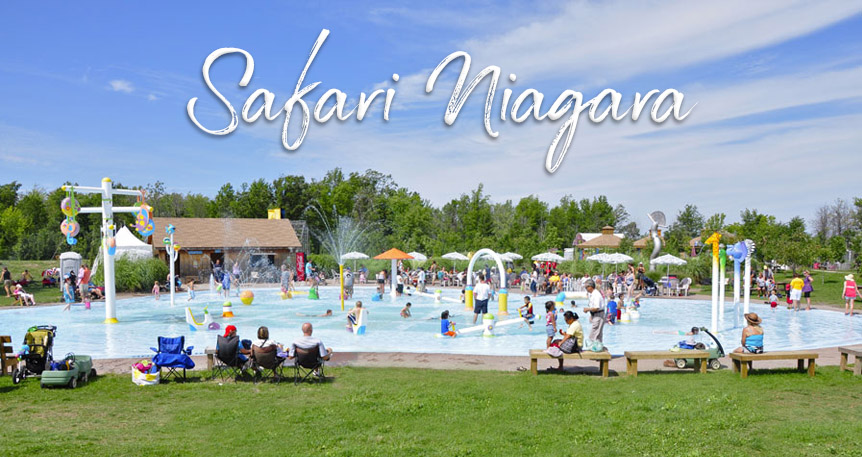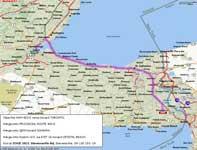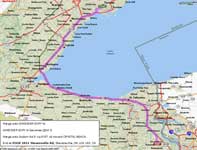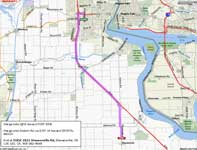Safari Niagara

Have you ever come face to face with a hippopotamus?
Can you imagine nuzzling noses with a giraffe?
Want to hang out with a two-toed sloth?
You can at Safari Niagara
More than 1000 animals and birds are waiting to meet you at Safari Niagara, Niagara's Wildest Animal Adventure!
Safari Niagara is a 150-acre nature park located within a 10-minute drive from Niagara Falls, Canada and Buffalo, USA.
Safari Niagara features an incredible range of exciting, educational activities for all ages and abilities-from a petting park to children's playgrounds, Interactive animal presentations and feeding demonstrations, slash pad, fishing, paddle boating, playgrounds, Keeper Talks and one of Canada's largest steel sculpture exhibits! Bring a picnic or feast on a fantastic meal at our counter-service restaurant.
SPECTACULAR SHOWS & CONCERTS!
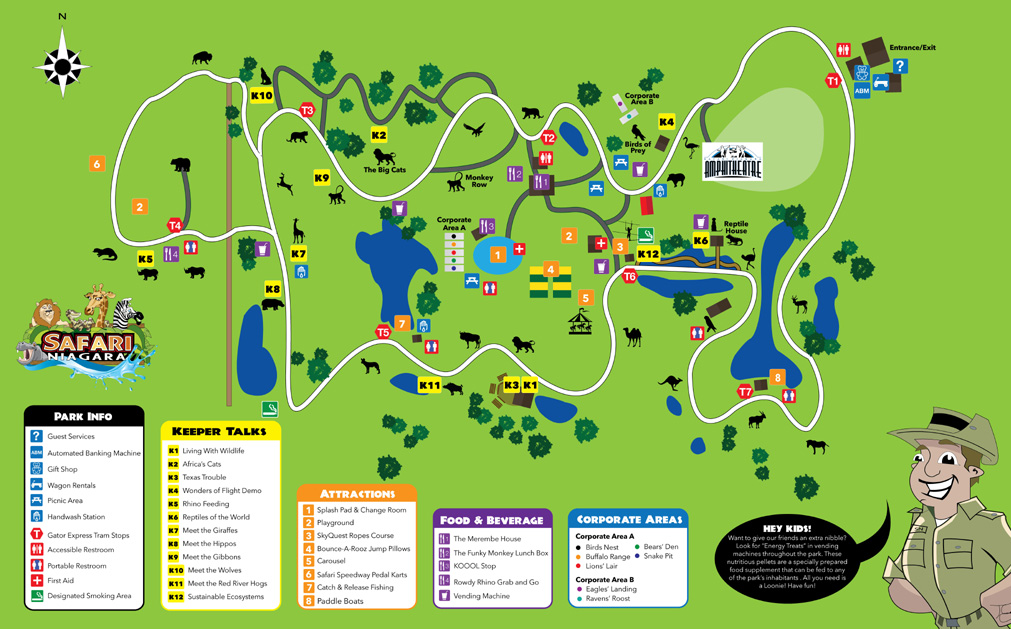
Safari Niagara has entertainment for all ages from live outdoor concerts to sky-soaring birds of prey presentations. Don't miss our Keeper Talks where you'll get familiar with Safari Niagara animals and their handlers for an interactive experience to remember. Come along on our guided tours featuring the big cats, primates and bears. Visitors can even try their hand at feeding a gentle Giraffe or a hungry Hippopotamus!
2019 HOURS OF OPERATION
- MAY 18, 2019 – JUNE 14, 2019:--> 10:00AM – 5:00PM
- JUNE 15, 2019 – SEPTEMBER 2, 2019:--> 9:00AM – 6:00PM
- SEPTEMBER 3, 2019 – OCTOBER 11, 2019:--> 10:00AM – 5:00PM
- OCTOBER 12, 2019 – OCTOBER 14, 2019:--> 9:30AM – 4:00PM
- OCTOBER 15, 2019: --> Closed For The Season
VISITORS OF ALL AGES CAN EXPERIENCE THE SAFARI NIAGARA PARK THROUGH:
- Educational, Narrated Tram Rides
- Interactive, Educational Presentations
- Educational Class Trips
- Kids Birthday Parties
- Behind-The-Scenes Packages
- Live Concerts & Special Events
- Safari Niagara Adventure Day Camp
Some of the seasonal activities available..
- BOUNCE A ROOZ
- CAROUSEL
- CATCH & RELEASE FISHING
- CHILDREN’S PLAY AREA
- GATOR EXPRESS TRAM
- PADDLE BOATS
- PAPA STEVE’S FAMILY FARM
- SAFARI SPEEDWAY
- SKY QUEST ROPES COURSE
- SPLASH PAD
- WALK THROUGH BUDGIE EXHIBIT
Admissions
2019 Dates and Hours of Operations
|
General Admission
Your Safari Niagara all day admission pass includes complimentary parking, admission to Safari Niagara NEW splash pad, interactive animal presentations, guided tours of the Silent Forest, fishing, kite flying and paddle boating and so much more!
FREE admission to children 2 & under.
MAY 18 – 31, SEPT 3 – OCT 14
| Children (3-12) | $20.95 + HST |
| Adults (13-64) | $25.95 + HST |
| Seniors (65+) | $20.95 + HST |
IN SEASON RATES 2019 : JUNE 1 – SEPT 2
| Children (3-12) | $28.95 + HST |
| Adults (13-64) | $34.95 + HST |
| Seniors (65+) | $28.95 + HST |
SEASON PASS 2019
| Adult/Senior | $70.00 + HST |
| Child | $60.00 + HST |
- Offer:- $3.00 off admission rates for tickets purchased after 2:00PM.
- Enjoy the park and included amenities all season long (includes access to splash pad, paddleboats, fishing and playgrounds)
- From June 1st - Labor day your seasons pass now includes unlimited use of the ropes course, and safari rides.
- Unlimited use of the in-park tram system
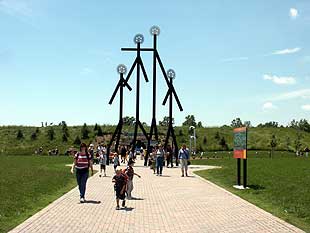
Group Rates
Call the Safari Niagara sales office for more information on GROUP RATES
School Programs
Corporate Groups
Reunion
Community Groups
Day Camps
Birthday Parties
Wagon Rentals
For more information please call office hours 8am-4pm, 905-382-9669
SOMETHING FOR EVERYONE
Ziggy's Zoovenier shop is a perfect place to find unique gifts for everyone on your list. Plush animals, apparel, gifts, for everyone on your list. Plush animals, apparel, gifts, jewellery, games and more all with a wildlife conservation theme. Many of our items will be only available at Safari Niagara providing you with a one of a kind shopping experience. We also provide a variety of local, native and unique products.
On your way in or out of the park be sure to visit the Stevensville Garden Gallery! Located adjacent to the Safari Niagara parking area, this garden center and gift store offers an array of unique indoor and outdoor home and gardening items year-round.
Meet Wild Animals in Safari Niagara
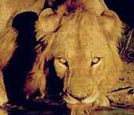 Species: Panthera Leo The African lion is the second largest cat (the tiger is the largest) and is the only cat with a mane. Like most cats, African lions sleep 16-20 hours a day. |
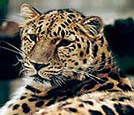 Species: Panthera Paradus Orientalis Amur Leopards are the most critically endangered of all big cats. Native to Russia (specifically along the Amur River, hence their name) and Northern China, there are only about 40 Amur leopards left living in the wild. This is due to loss of habitat, loss of prey and poaching by humans. |
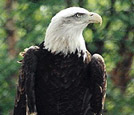 Species: Haliaeetus Leucocephalus The Bald Eagle is the only eagle confined to North America and there are not other large black birds in North America with white heads and tails. Bald Eagles, like all birds, see in colour. An eagle's eye is almost as large as humans but they can see at least four times more defined. The eagle can identify a moving rabbit at a mile away. |
 Species: Ursus Americanus Black bears are bulky, heavyset mammals. Although named "Black Bear" Their colours can vary from brown, dark brown, cinnamon, blue, black to even white. The eyesight of the black bear is relatively poor but their sense of smell and hearing are very well developed. The claws of the black bear are very strong. They are used in searching for food by digging and tearing out roots, logs and stumps, searching for ants etc. |
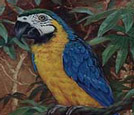 Species: Ara ararauna Blue and Gold Macaws are one of the larger macaws. They live in flocks in the wild and are intensely social birds, mating for life. Notice how parrots feet are different than most other birds. They have four toes. Two point forward and two point backward. This gives the Macaw an excellent grasp of its perch or tree limb. |
 Species: Felis Rufus The Bobcat, named for its short tail, looks very similar to the Canada Lynx. They can be distinguished from the Lynx by their shorter hind legs, shorter ear tufts and smaller feet. The Lynx has black all around the tip of its tail, whereas the Bobcats tail is black only on the top. |
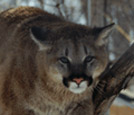 Species: Felis Concolour Also known as a puma, panther or mountain lion, cougars are one of the only three cats native to Canada. (The Bobcat and Lynx are much smaller with shorter tails.) The Cougar is the second largest cat in the western hemisphere. (The Jaguar is the largest.) They vary considerably in size throughout their range but the males generally weigh 1½ times more than females. |
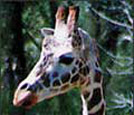 Species: CarCamelidae Giraffidae The giraffe is the tallest animal in the world. The male giraffe may grow up to 18 feet tall and weigh up to 2000 lbs. Females are slightly smaller. The long neck of the giraffe has the usual seven vertebrae as most mammals but each is greatly elongated. Along with the neck, there are other adaptations a giraffe possesses to help it survive in the wild. The giraffe's long tongue for instance, can extend up to 18 inches and is prehensile so it can wrap around leaves or shoots high in the trees. |
 Species: Bubo Virginianus The Great Horned owls are one of the most widespread species of owls. They occur all over the United States, most of Canada and Southward to Central and South America. The males and females are similar in appearance except the female is the larger of the two. |
 Species: Canis Lupus Wolves are very communal animals with a complex and organized social structure. They hunt in groups (called packs) and spend most of their lives in the presence of other wolves. |
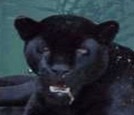 Species: Panthera Onca The only difference between a spotted jaguar and a black jaguar is their colour. Melanistic means black when it comes to cats. Melanistic jaguars are common in certain parts of their range and are often confusingly labelled "Black Panthers", which is also applied to Black Leopards. In this melanistic form the cats are more difficult to separate, however the Jaguars large head and stocky forelimbs are often a good way to differentiate between the two cats. |
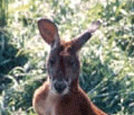 Species: Macropus Rufus The Red Kangaroo is one of the largest living marsupials. (Marsupial means the mother carries the baby in a pouch.) The red is the largest of all Australian Kangaroos. Males can be as tall as 2 meters and weigh as much as 90 kg. The females may be 3 times smaller. |
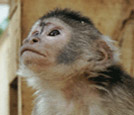 Species: Cebus Capucinus The name Capuchin comes from their manes which resemble that of a Capuchin Monk. These small monkeys spend most of their time in the mid-canopy of the Amazon Rain Forests of Central and South America. They usually only come to the ground to drink. |
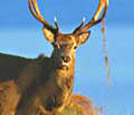 Species: Cervus elaphus Red deer are part of the Cervidae family which has been evolving since the early Miocene era about 20 million years ago. They are some of the most widely distributed deer in the world. They range from New Zealand, through Eurasia to Northern Europe. |
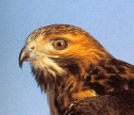 Species: Buteo jamaicensis Hawks are carnivores (meat eaters) and they belong to a category known as raptors. (Birds of Prey) Their beaks are hooked and strong. Their feet have 3 toes; two pointed forward and one pointing to the rear. (Unlike parrots) Their claws or talons are long curved and very sharp. Like all hawks, the Red Tailed hawks talons are its main weapon. |
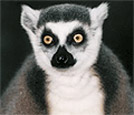 Species: Ring-tailed Lemur You might recognize these guys as Zaboomafoo from the televisions Kratt's Kreatures. Actually Zaboo is a sifika, which bares similar characteristics closely resembling that of a ringtail lemur. Maybe it's their distinct colouration. Their undersides are white and their faces are white with dark triangular eye patches and black noses. Their common name comes from the 13 alternating black and white bands. |
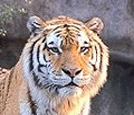 Species: Tigris Altaica Siberian Tigers are the largest of all tiger's subspecies with males averaging up to 700 pounds and females averaging up to 500 pounds. An average Siberian is 12 - 13 feet from the nose to the tip of the tail and 3 feet high at the shoulders. Siberian Tigers are the only tigers to live in cold weather often below zero degrees Fahrenheit and they get their name from the region in which they live, the Amur-Ussuri region of Siberia. Some have been found in North-eastern China and North Korea. |
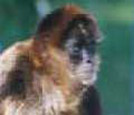 Species: Ateles paniscus Spider monkeys are like the trapeze artists of the animal world. They enjoy spending much of their time swinging from limb to limb high above the jungle floor. They can use their tails, which are longer than their bodies to grip when two hands just aren't enough. This tail (called a prehensile tail) can also be used to pick things up and as you'll notice this species lacks a thumb. |
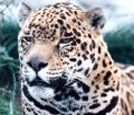 Species: Panthera Onca Apart from man, the jaguar has no rivals. No other predator can compete with this powerful cat. In comparison with the other cats of its size the jaguar has particularly powerful jaws and often kills its prey by piercing the skull with one swift bite. |
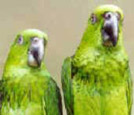 Species: Amazona auropalliata The Yellow-nape Amazon is one of the most talented talkers of the Amazon species. This very intelligent member of the Amazon family will usually start learning to talk as young as 4 months and their capacity to learn new words and phrases increases, as they get older. |
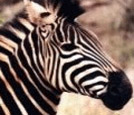 Species: Equus Usually Grants' Zebras are vertically striped in the front, horizontally on the back legs and diagonally on the rump and hind flanks. These stripes allow them to become almost invisible in tall grass and hard to make out in the open because their outline becomes broken up by the stripes. If standing in a herd it is hard to pick out an individual Zebra. |
What to Do at Safari Niagara
Splash Pad
Wet, wild and wacky fun for kids old and young awaits you at Safari Niagara splash pad. Jolly Splashers and rainbow misters will wet the wee ones while the older of the species amuse themselves with squirting teeter totters and motorcycles, tipping fish and kid-controlled, jungle themed "wet heads". Conveniently located on the southern side of Merembe House at tram stop number 2.
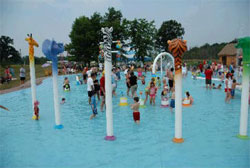
- Change rooms available
- Patio area
- Gift shop
- Water depth: 10 inches
- Adult supervision is mandatory
- Wheelchair accessible
- Safari Niagara recommends that you always be smart and wear a sunscreen when outdoors
- Opening Date - Mid June
- Closing Date - Mid September (Weather Dependent)
Petting Zoo
Animal Communication, interaction between animals in which information transmitted from one animal or group of animals affects the behaviour of other animals. Safari Niagara has established an area that allows for animal communication of an up close and personal kind. Animals typically exchange information using a signal, such as facial expression, sound, or touch. Communication between animals helps them coordinate the vital functions of their lives-namely, gathering food, staking out territory, caring for young, defending themselves or interaction with other species such as humans.
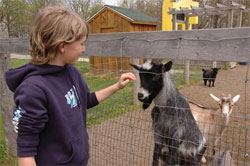
Most commonly, animal communication is intraspecific (occurring between animals of the same species). Intraspecific communication also helps distinguish individuals in a particular animal group. Mother gulls learn to recognize the individual calls of their own chicks so that they can quickly find their babies in densely populated gull colonies.
Communication can also be interspecific (occurring between different animal species). Many animals who share habitats learn to use signals from other species as warnings for approaching danger. Tree-living monkeys respond to the alarm cries of other animal to warn of danger. Many animals also have mutual relations that help each other survive or add in some other areas of comfort. Safari Niagara has created a unique opportunity for people to communicate with animals. We have created an opportunity to communicate through touch, voice and even an odd facial expression or so.
Please make sure to visit our communication park that allows you an up close and personal interaction with the other species. Who knows what you may learn or teach to another species?
Children's Playing Area

Play is a child's way of learning - it develops imaginations, inspires delight, creates wonder, increases curiosity and enchants the little ones. Safari Niagara has created an outstanding play environment adjacent to our picnic pavilion - featuring slides, swings, climbers, tunnels, bridges and "tree huts".
With Mom and Dad an arm's length away enjoying a rest at one of the many benches and picnic tables, kids can occupy themselves on our great CSA approved play equipment, meet some new friends and chat with their peers about the neat experience they have had at Safari Niagara. Yet another added value for families at Safari Niagara!
Fishing
Fishing at Safari Niagara is an exciting and fun learning experience, under the supervision of an experienced angler. We have a well stocked pond that ensures a large selection of crafty fish such as black bass and sunfish. Our catch and release program ensures the safety of our fish and provides you with an experience that you will never forget. In fact we can even help with those big fish stories.

People have fished since ancient times, when pieces of bone were used as hooks and lengths of vine as line. The oldest known painting of an angler using a rod or staff comes from Egypt and is dated about 2000 BC. Can you just picture yourself fishing on the shore of a great lake with Zebra and Giraffe just over your shoulder? Greek philosophers Plato and Aristotle mentioned angling in their writings, and other Greek writers gave tips about fishing lines. In the 2nd and 3rd centuries AD, The Romans wrote about Macedonian trout anglers using artificial flies as lures.
The methods and tackle used for fishing evolved slowly through the centuries, and not until the late 15th century did sport fishing as it is now known really begin. In 1496 the written first book gave specific details for in English about the use of the fishing rod. The book describes the construction of hooks and rods for angling. The manuscript also describes how to tie knots in fishing lines and how to make and use artificial lures and flies to take advantage of the feeding habits of game fish. At Safari Niagara we fish for fun and relaxation and we release all our catches. Our fishing programming is a catch and release program under supervision, we want to make sure you have a safe and memorable time.
We offer fishing equipment to use free of charge and bait is available at a nominal fee.
Bounce-A-Rooz

We have 2 NEW Jumping Pillows this year! They are huge, inflatable pillows allowing you to jump sky-high and bounce until you can't bounce any more - Our Bounce-A-Rooz
Even the little ones can enjoy one all of their own!
*June 1st or later - Labour Day only. Weather Permitting.
Safari Speedway
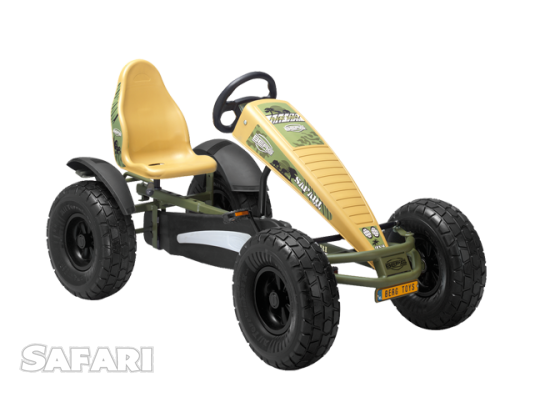
Do you want to go on journeys of discovery through the splendors of nature? Our NEW Pedal Bike Go-Karts take you anywhere you want to go on the track. With their impressively large tires you can forge a route across our awesome track. Thanks to its camouflage you can blend in naturally like our animals! Let the Discovery begin!
*June 1st or later - Labour Day only. Weather Permitting.
Paddling
Come and enjoy our paddle boats on our manmade lake. FREE with park entrance!
Keeper Talks

Learn more about some of your favourite animals from the keepers who take care of them on a daily basis. Our Keeper Talks will provide educational information about what is required to care for our animals, share some of their unique personalities with you and provide you with an intimate look on conservation.
Please Note: All Keeper Talks are weather permitting and do not run in inclement weather.
Tram Tours
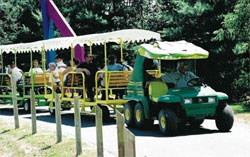
Give your legs a rest and climb about the Gator Express, an open-air tram system that makes several designated stops throughout the park allowing you to get on and off as often as you wish. The tram ride is also a guided tour of Safari Niagara, so you can relax and listen as you make your way around the perimeter of the park.
The tram stops at the restaurant, the Silent Forest, the Zooniversity staging area, the paddle boats and main entrance/gift shop. The tram is wheelchair accessible and equipped with a ramp. Strollers and wagons are also welcome on board.
Sculptures
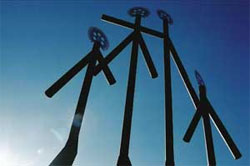
Safari Niagara is home to the largest steel sculpture exhibit by one artist in the country. Rod Dowling has been creating his one-of-a-kind pieces for Safari Niagara since the park opened in 2002 and today there are more than 200 on display throughout the grounds.
From 50-foot high stainless steel sculptures to usable steel benches, Mr. Dowling has added an incredible uniqueness to Safari Niagara with his talent of using recycled pieces of steel to create these one-of-a-kind sculptures.
SkyQuest (June 1 - Labour Day)

Welcome to SkyQuest, a brand new multi-level adventure ropes course at Safari Niagara, the first of its kind in Ontario. Challenge the thrill-seeker in you by navigating a stimulating obstacle course 30 feet in the air using only ropes and beams. Anyone can participate, children under 48" tall must be accompanied by a chaperone.
Smaller adventurous types can join in the fun on SkyTykes, a challenging course of balance beams, ropes and bridges similar to its larger counterpart, SkyQuest.
Individuals are harnessed and maneuver themselves along a track for safety. And there's no hurry... you conquer the course at your own pace, making it a great adventure for the whole family!
Frequently Asked Questions
When is Safari Niagara open?
Safari Niagara is open seasonally from May to October.
How many animals and birds live at Safari Niagara?
Safari Niagara is home to more than 100 species of animals and birds from hippopotamuses and giraffes to parrots and eagles. In total, there
are more than 1000 animals and birds. The park has large collections of ungulates, big cats, including a white tiger and snow leopard
as well as a variety of primates including gibbons apes and spider monkeys.
Does Safari Niagara offer discounts to groups?
Yes, groups are definitely welcome at Safari Niagara and will receive a discount based on the number of people in your group. We also offer
packages and incentives for corporate and school groups. You can also celebrate birthdays and reunions at Safari Niagara with per person
rates. Please call for group discounts- 905-382-9669 ext 254.
Where is Safari Niagara located?
Safari Niagara is located at 2821 Stevensville Road in Stevensville, Ontario. Stevensville is located within the municipal boundaries of the
Town of Fort Erie, Ontario. For more information about Fort Erie and Stevensville, go to www.forterie.on.ca.
Is Safari Niagara privately owned?
Yes, Safari Niagara is owned and operated privately by the Tykolis family.
Is Safari Niagara accessible to wheelchairs and strollers?
Definitely. All of the trails are either paved or smooth surfaces suitable for wheelchairs and strollers. The tram is also equipped
to safely transport wheelchairs, strollers and wagons. People of all ages and abilities are encouraged to visit Safari Niagara!
Can I bring food into the Park?
Yes, you can pack your own food to bring into the park with the exception of glass, alcohol beverages and BBQ’s. Also there is food on-site at various food locations throughout Safari Niagara.
Does Safari Niagara Offer Day Camps & Bithday Parties?
Yes, Safari Niagara offers an Adventure Day Camp Program for children ages 6 to 12. Also Safari Niagara offer birthday parties.
Does Safari Niagara Offer Coroporate Picnics and Events?
Yes, Safari Niagara offers various corporate packages. For more information, please contact our group sales department at 905-382-9669 ext.254
Can I feed the animals?
Yes, you can feed the animals food that is provided at the park. Outside food not allowed.
What all include in a Day Admission to Safari Niagara?
Your day admission is all-inclusive and gives you unlimited access to all in-park shows, tours and presentations as well as activities.
Directions
Directions from Hamilton
Take the HWY-403 E ramp toward TORONTO.
Merge onto PROVENCIAL ROUTE 403 E.
Merge onto QEW toward NIAGARA.
Merge onto Sodom Rd S via EXIT 16 toward CRYSTAL BEACH.
End at Safari Niagara 2821 Stevensvill Rd, Stevensvill, ON L0S 1S0, CA
Directions from Toronto
Merge onto GARDINER EXPY W.
GARDINER EXPY W. becomes QEW S
Merge onto Sodom Rd S via EXIT 16 toward CRYSTAL BEACH.
End at Safari Niagara 2821 Stevensvill Rd, Stevensvill, ON L0S 1S0, CA
Directions from Niagara Falls
Merge onto QEW toward FORT ERIE.
Merge onto Sodom Rd S via EXIT 16 toward CRYSTAL BEACH.
End at Safari Niagara 2821 Stevensvill Rd, Stevensvill, ON L0S 1S0, CA
Directions from Buffalo
PEACE BRIDGE becomes QEW
Merge onto NETHERBY RD via EXIT 12.
Turn LEFT onto STEVENSVILLE RD.
End at Safari Niagara 2821 Stevensvill Rd, Stevensvill, ON L0S 1S0, CA
Directions from Niagara Falls, NY
RAINBOW BRIDGE becomes ROBERTS ST.
Stay STRAIGHT to go onto PROVENCIAL ROUTE 420 W.
Merge onto Sodom Rd. Via EXIT 16 toward CRYSTAL BEACH
End at Safari Niagara 2821 Stevensvill Rd, Stevensvill, ON L0S 1S0, CA
Safari Niagara - Contact Details
Address: 2821 Stevensville Road Stevensville, Ontario L0S 1S0
Email: info@safariniagara.com Phone: (905) 382-9669

